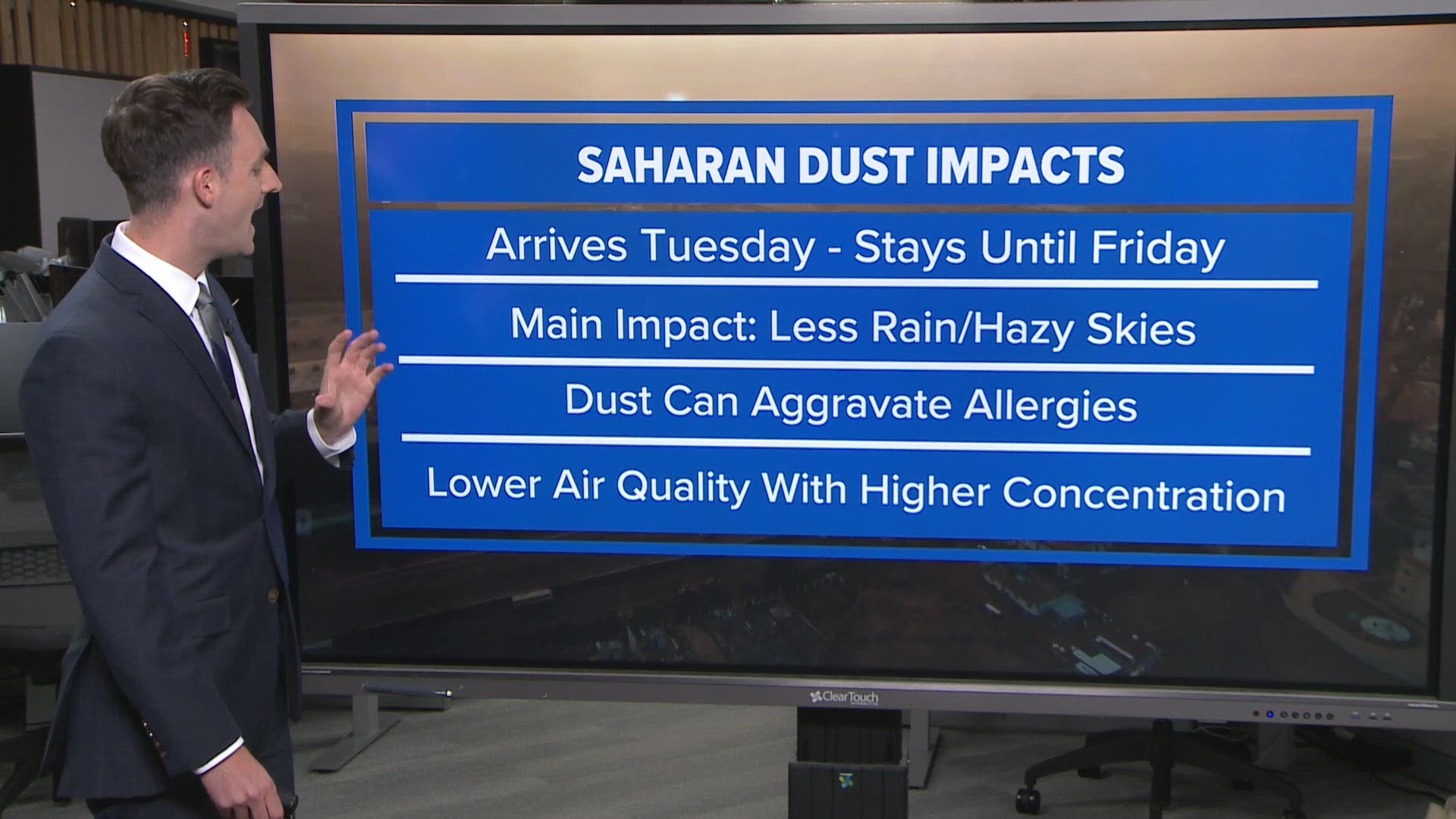HOUSTON — For a few weeks now, we've been tracking the Saharan dust to see if it will make its way to the Houston area.
According to the KHOU Weather Team, the dust is in our backyard and is expected to be over Houston Tuesday and stay over us through Friday.
The main impacts we'll see from this dusty layer are hazy skies and a drop in rain chances -- as if we needed that. The dust can also impact those with allergies.
Our air quality should stay at a moderate level because this is a low concentration of dust getting ready to fly over us.
Where does Saharan dust come from?
Saharan dust in the atmosphere is not uncommon this time of year.
Saharan dust comes from the Sahara Desert, but that's only one part of the equation. To the south of the Sahara Desert, we have the Sahel, which is a region in Africa.
The Sahel is a semi-arid climate, which means that it's a desert during some parts of the year and in other parts of the year it gets monsoonal rainfall.
It's the monsoon rains that create that dust that moves across the Atlantic and eventually over Texas.
What happens is thunderstorms develop during the monsoonal season, which is from May to September, and as it happens, storms develop, and as they collapse they create outflow boundaries.
Those outflow boundaries are just a big rush of air.
As that air rushes through the Sahel and into the Saharan desert, it picks up dust.
That dust lifts into the air and gets lofted by the trade winds and is carried thousands of miles across the Atlantic.
High pressure over Bermuda keeps that dust to the south and steers it into the Caribbean and eventually into the Gulf of Mexico, and that is what gives us the hazy skies.
The benefits of Saharan dust
For those who suffer from asthma and allergies, the Saharan dust could be a pain. The hazy skies could really affect air quality.
But on the flip side, the benefit of having dust in the atmosphere is that it chokes off any tropical development because of its layer of dry air in the mid-levels of the atmosphere.
So in short, when there's dry air, you can't get clouds to develop.

